The development of the Tauchretter
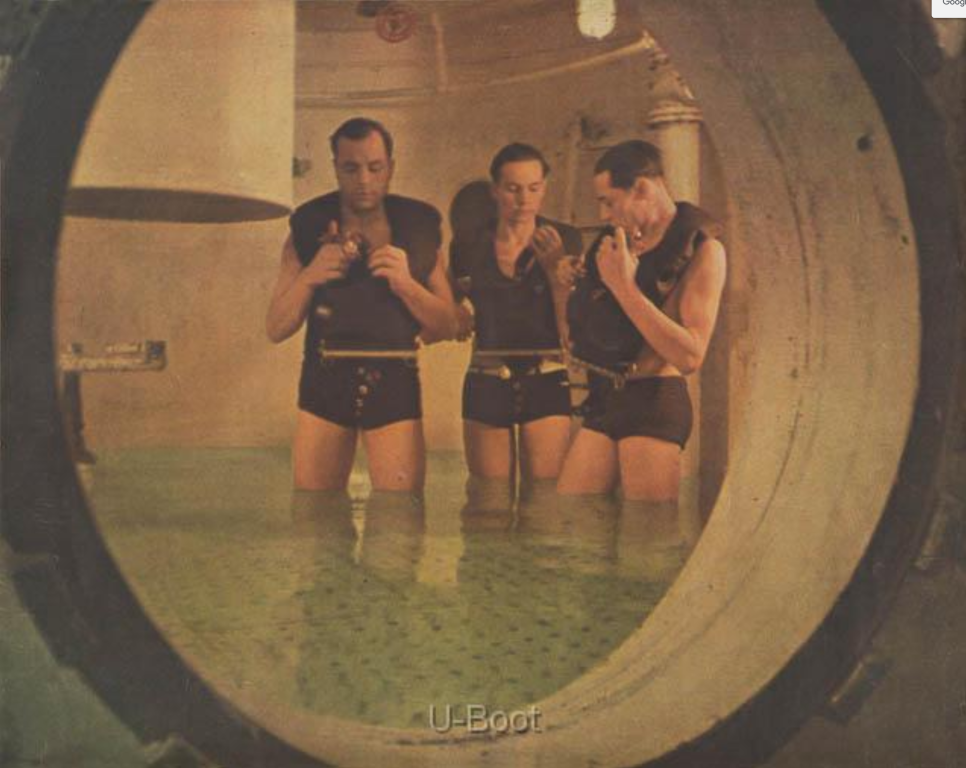
After the French submarine Farfadet sank in 1905, followed by the Pluvoise and the German U3 in the German Bight, it was decided in Germany to develop rescue equipment for submarine crews. This resulted in the development of the DM1, DM2 and the D1 Tauchretter. All these lifesavers were relatively large and heavy and in the run-up to the Second World War, there was a great need for a light and affordable diving apparatus for submarine rescue. Draeger developed the Gegenlunge in 1929-1932.
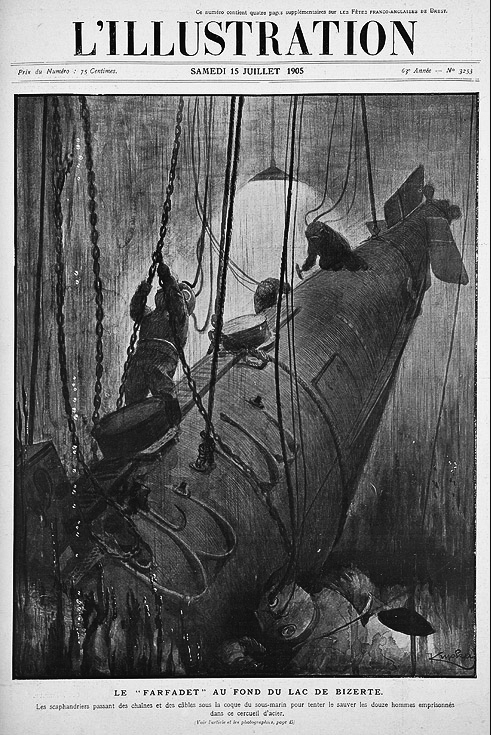
The device was intended for 30 minutes of dive time, after which oxygen and alkali cartridges were used up. The counterlung contains a volume of 10 litres. Therefore, depending on the depth, the lung must be refilled with oxygen several times underwater. No breathing valves were used, so that pendulum breathing was applied. Since one can only dive to a depth of 20 metres with pure oxygen, but also deeper for short periods – for example 5 minutes to a depth of 100 metres (Stelzner!) – the counterlung is first filled with air before being used at greater depths.
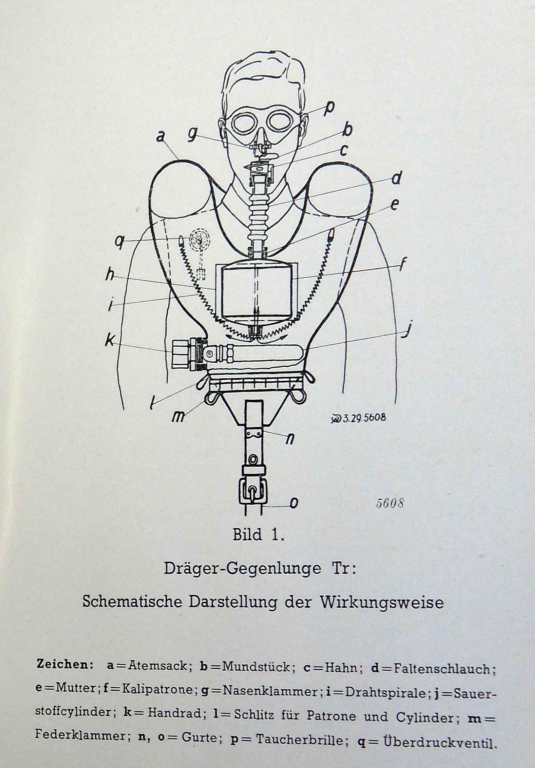
- A= Counterlung
- B= Mouthpiece
- C=Surface valve
- D=Breathing hose
- E= Connecting Nut
- F= Scrubber
- G = Nose-piece clamp
- H= Scrubber area
- I = Anti-collapse spiral
- J = Oxygen cylinder
- K = Valve
- L = Opening cartridge
- M= Clamp
- N = Belt
- P= Goggles
- G= Overpressure Valve
Intermezzo: Stelzner indicates in his book ‘Taucher Technik’,
that the Gegenlunge was used for submarine escapes to depths from 100 metres.
The device is special because of its low weight and compact design, weighing only 5 kilograms, and the position in which it is carried on the chest makes it very comfortable to breathe.
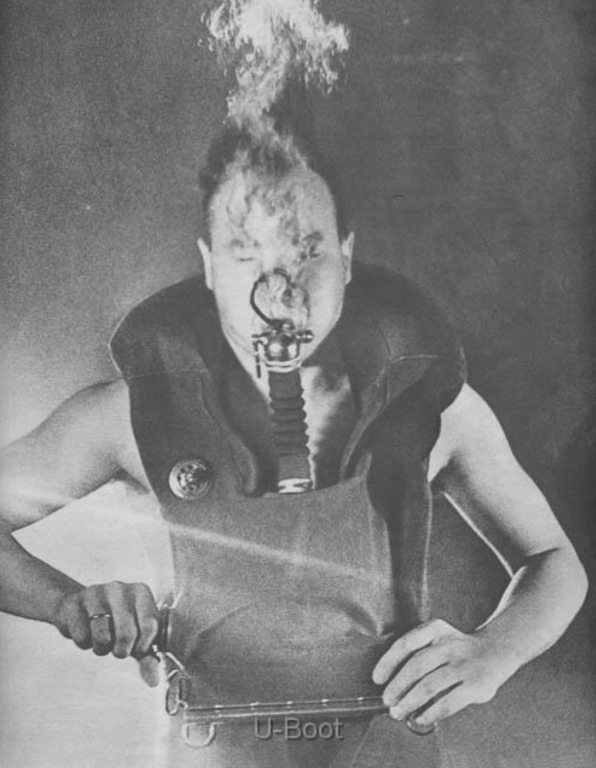
Otto Heinrich Draeger and Hermann Stelzner patented their invention and the patent can be found here.
There was also a smaller Drager Gegenlung type B developed to save drowning people to a depth of 15 metres. This smaller model stood at the cradle of the Gegenlunge which formed the line of several models of Tauchretters. This device is also called ‘kleintauchgerät’ and is used by the fire brigade, emergency services and other rescue organizations.
The smaller type of Gegenlunge uses a Superoxide cartridge, making the oxygen bottle obselete. This type of device weighs only 2.5 kilograms.
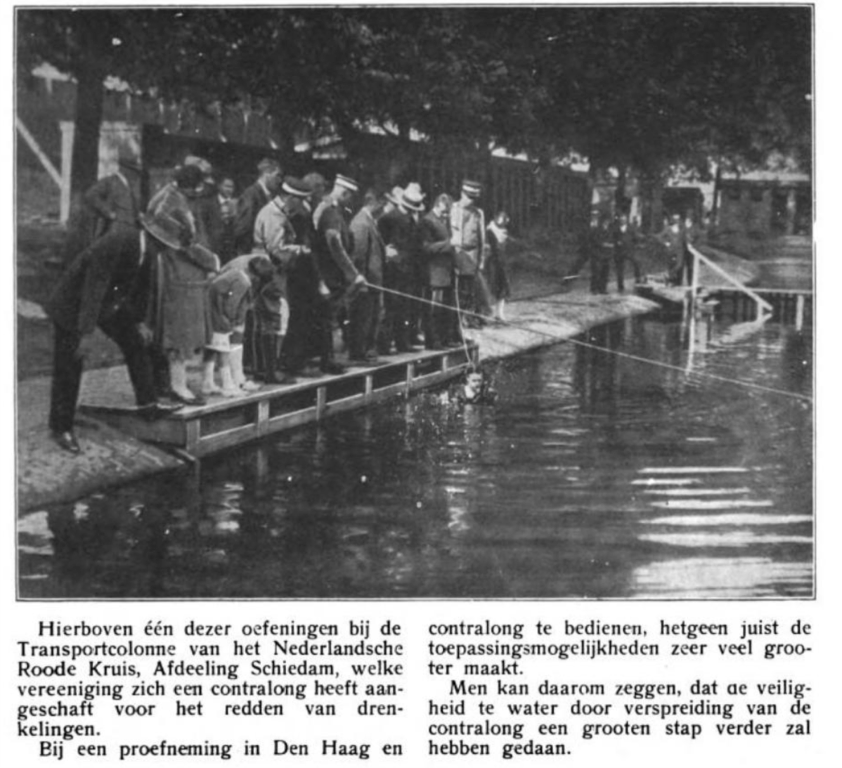
In the picture above you can see an exercise of the Red Cross in the Netherlands. The image shows an exercise in The Hague where the use of the Gegenlung is practised with the aim of gaining experience in rescuing drowning people. The article concludes with the statement that the use of the Gegenlung will increase safety around water.
There was also a smaller Drager Gegenlung type TR developed to save drowning people to a depth of 15 metres. This smaller model stood at the cradle of the Gegenlunge which formed the line of several models of Tauchretters. This device is also called ‘kleintauchgerät’ and is used by the fire brigade, emergency services and other rescue organizations.
Another type of Gegenlunge uses a Superoxide cartridge, making the oxygen bottle obselete. This type of device weighs only 2.5 kilograms.
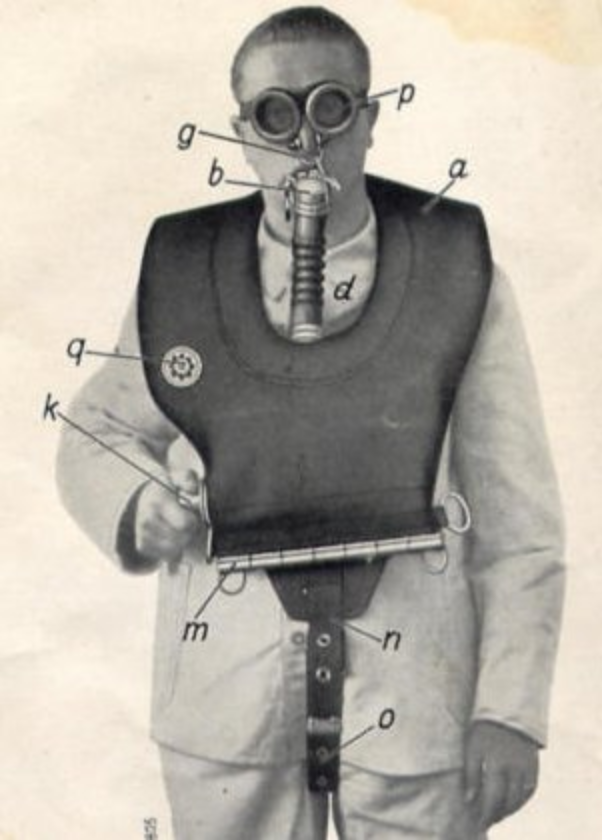
For its use as a submarine rescue device, it has been determined that it can be breathed for 5 minutes with 100% oxygen and for 10 minutes at 50 metres. If it is possible to leave the submarine during this time, only 1 instruction is needed to use the device.
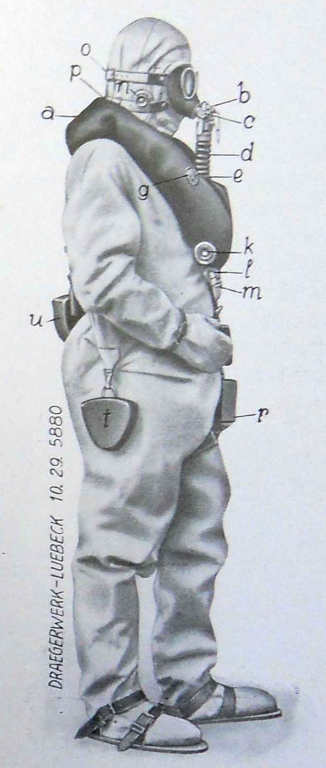
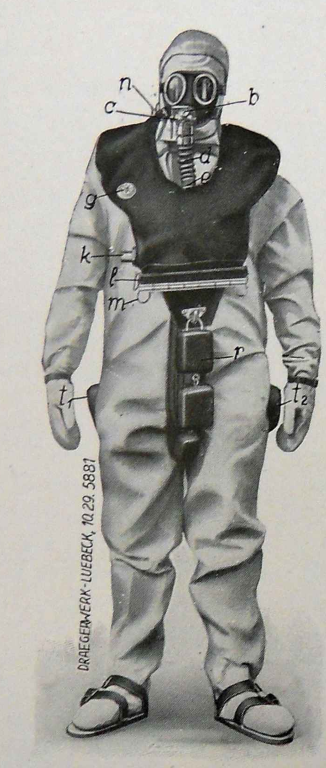
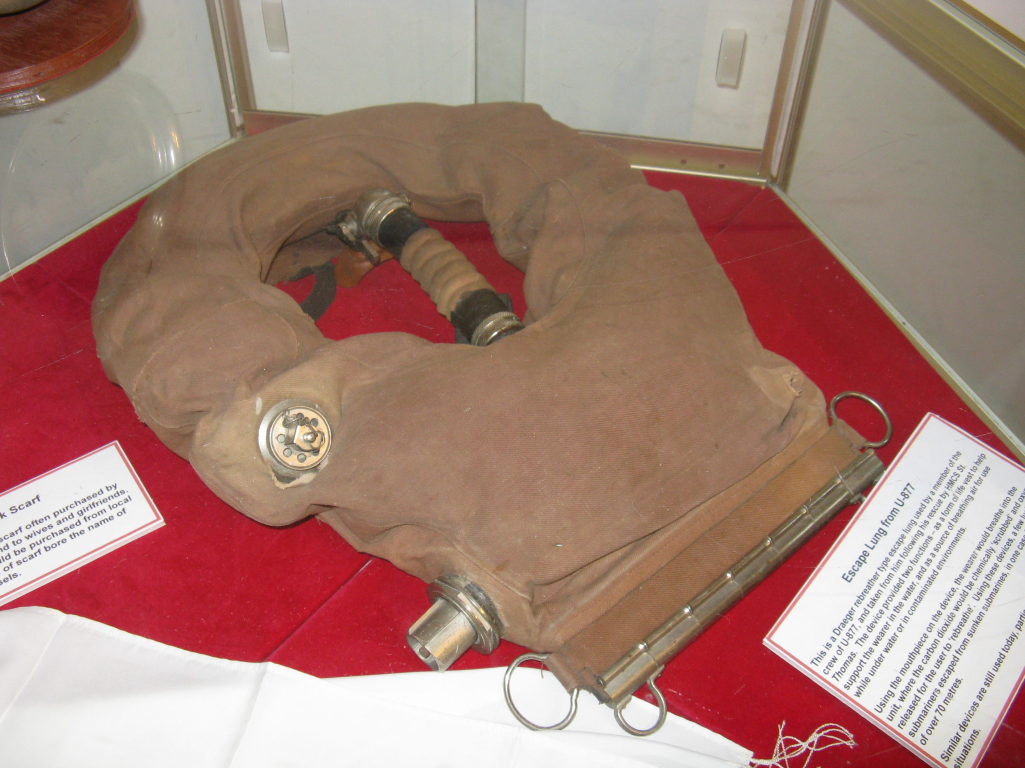
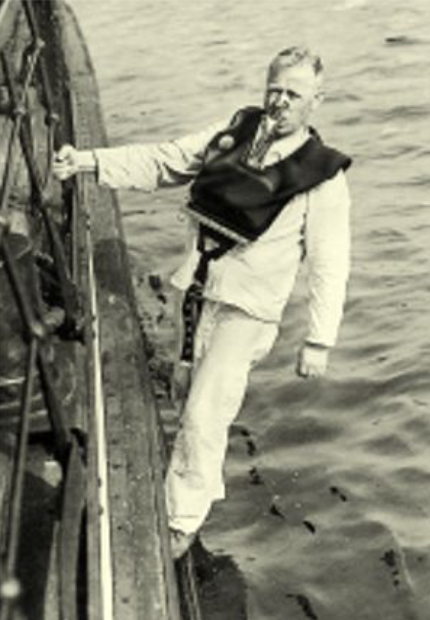
courtesy: Divingheritage.com / Draeger
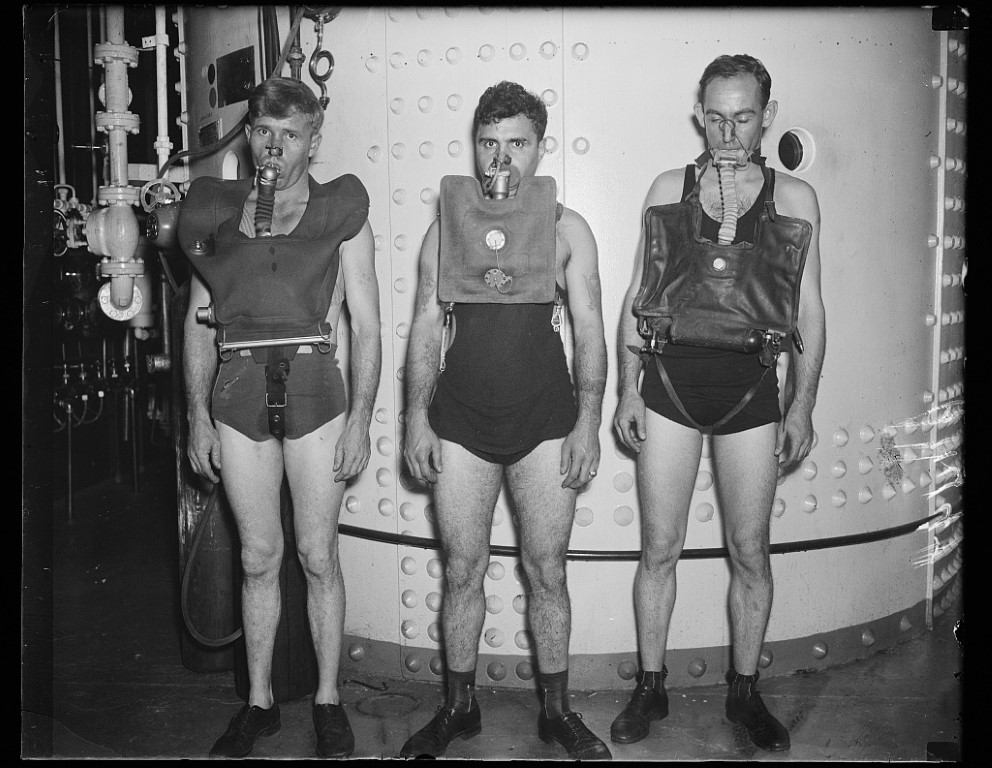
Courtesy: Harris & Ewing Photographs
In Stelzner’s book Taucher Technik, Hermann Stelzner describes how to use the tauchtretter. The description is concise. The tauchretter is put on and not yet used. The diver fills the compartment with seawater. This had to be done quickly to limit inhalation of chlorine or CO2. Then the Tauchretter must be put into operation, the hatch opened and the diver swam upwards. Stelzner concluded by saying that recent studies had shown that fewer people died from chlorine or CO2 poisoning. This very basic instructions show that the chance of survival was minimal at that time.
The Gegenlunge or Tauchretter are sought-after objects. Unfortunately, there are fake tauchretters that are sold for high prices. Joe Brandt has a fantastic website entirely dedicated to the tauchretter with detailed information on how to distinguish real tauchretters from fakes. Check Joe’s websire here.
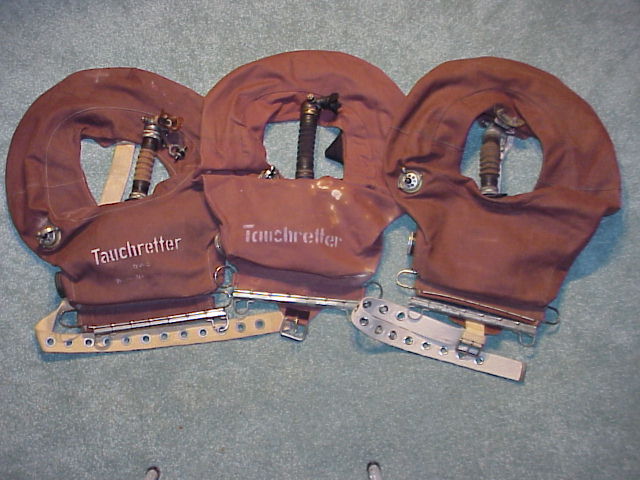
From: Inauguraldissertation of Michael Seydel, Universität zu Lübeck
link: https://www.zhb.uni-luebeck.de/epubs/ediss973.pdf
The Dräger Counter Lung
The Dräger counterlung was introduced to the market by Drägerwerk in 1929. Initial research work on the counterlung was started as early as 1926. According to the DrägerHefte, the Gegenlunge was developed in response to the desire for a smaller and cheaper diving device than the Badetauchretter. In the patent specification, however, the Gegenlunge is described as a rescue device for submarines. The German Reich was prohibited by the Treaty of Versailles from building submarines, but not diving rescuers. The first version of the counter lung had a cartridge with sodium hyperoxide instead of the oxygen bottle and the alkali cartridge. This cartridge was not only supposed to bind carbon dioxide but also to release oxygen, so that an oxygen cylinder was obselete. This design turned out to be unsuitable. The problem is that the oxygen release of the cartridge is proportional to the carbon dioxide uptake of the cartridge. This does not do justice to the physiological conditions of initially increased oxygen uptake and only later increased carbon dioxide release. Therefore, the version that appeared in 1929 had an oxygen cylinder and an alkaline cartridge, just like the diving rescuers of the DM series. The device was given the name Gegenlunge (counterlung) because it mainly consisted of the breathing bag, in which the alkaline cartridge and the oxygen cylinder were housed. The breathing bag lies in a ring around the shoulders and is fastened with a belt between the legs, similar to the previous Dräger models (see figure 3.6). In contrast to the models of the DM-series and the Badetauchretter, the counter lung is a pendulum breathing apparatus. This means that there are no separate tubes for inspiration and expiration. The diver breathes in from the breathing bag through an alkaline cartridge and a short piece of tubing, and out the same way. The counter lung is a closed breathing apparatus. The oxygen is manually refilled from a cylinder which is located in the breathing bag and can be operated from the outside. The cylinder size is 0.4 l and the maximum filling pressure is 150 at. This means that about 60 litres of oxygen are available. The oxygen cylinder and the alkaline cartridge can be exchanged through an opening. The overpressure that arises during ascent can escape through a valve. Accessories include diving goggles, a nose clip and various weights for use outside of submarine rescue. In addition, a waterproof suit, the so-called diving rescue suit, was offered for diving in cold waters. The 1929 version of the device weighed 3.5 kg. In later years, 2.5 kg is given as the weight. A reason for this is not known.
The small diving apparatus (Das Kleintauchgerät)
The Kleintauchgerät is a further development of the gegenlung, which, similar to the diving rescuer, is intended for water rescue and light work under water. In a catalogue from 1933, a version of the gegenlung with a larger alkaline cartridge and a larger oxygen cylinder of 0.6 l instead of 0.4 l is mentioned for the first time. The oxygen supply is continuous. The small diving apparatus was first advertised in 1940. The device resembles the modified form of the counter lung mentioned above. Due to the enlarged alkaline cartridge and oxygen bottle, the diving time is given as 40 min for light work or one hour at rest.51 The small diving apparatus weighs 3.7 kg. The counter lung is described in the operating instructions of the small diving apparatus as unsuitable for even light underwater work due to its limited capacity. It is only used for rescue from sunken submarines. This statement contradicts the older instructions for the counter lung, which state diving for light underwater work as the primary function of the device. The term small diving apparatus is also used in some publications for other Dräger products, such as the bath diving rescuer.

Therebreathersite was founded by Jan Willem Bech in 1999. After a diving career of many years, he decided to start technical diving in 1999. He immediately noticed that at that time there was almost no website that contained the history of closed breathing systems. The start for the website led to a huge collection that offered about 1,300 pages of information until 2019. In 2019, a fresh start was made with the website now freely available online for everyone. Therebreathersite is a source of information for divers, researchers, technicians and students. I hope you enjoy browsing the content!
